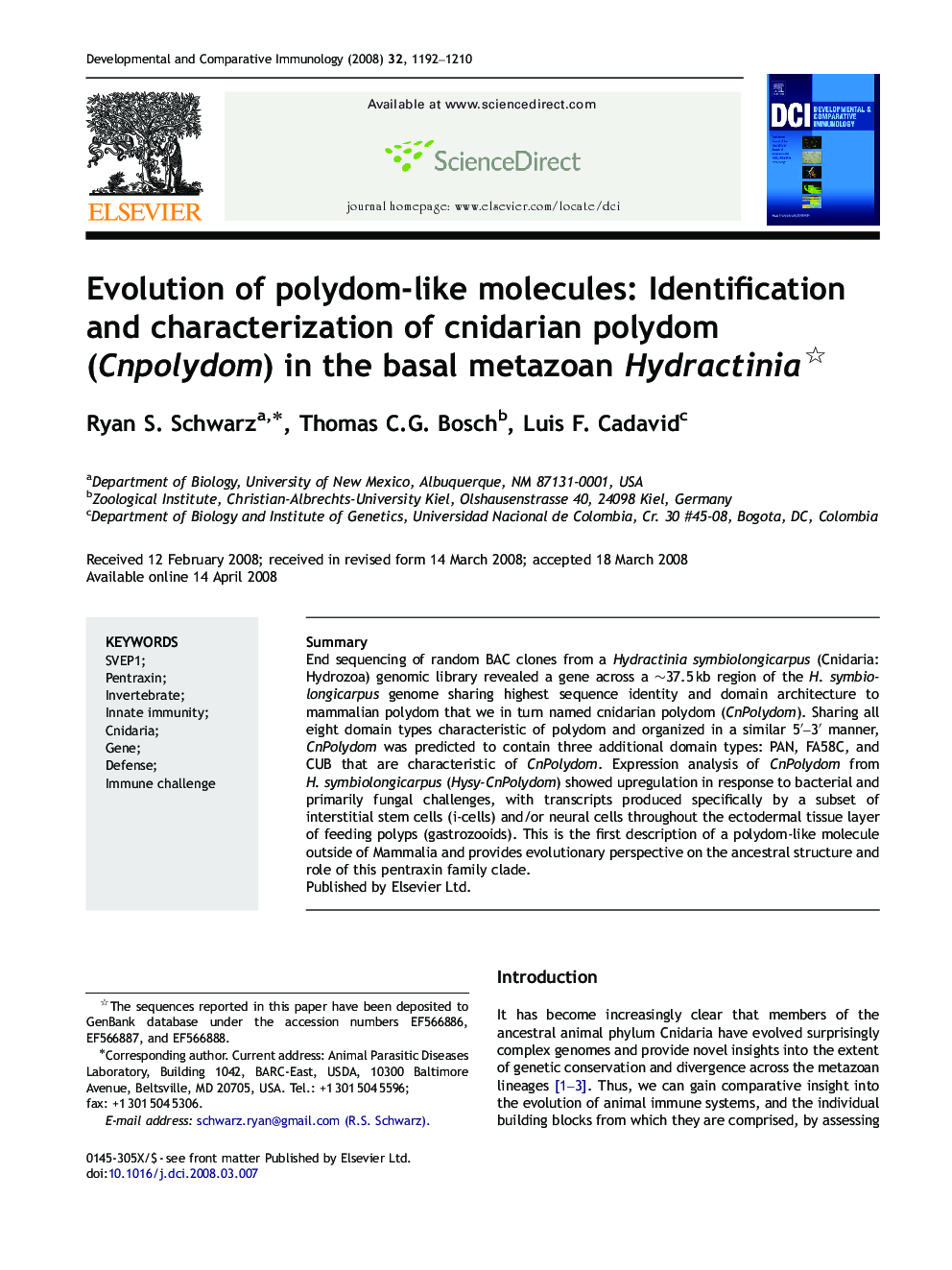| Article ID | Journal | Published Year | Pages | File Type |
|---|---|---|---|---|
| 2430350 | Developmental & Comparative Immunology | 2008 | 19 Pages |
SummaryEnd sequencing of random BAC clones from a Hydractinia symbiolongicarpus (Cnidaria: Hydrozoa) genomic library revealed a gene across a ∼37.5 kb region of the H. symbiolongicarpus genome sharing highest sequence identity and domain architecture to mammalian polydom that we in turn named cnidarian polydom (CnPolydom). Sharing all eight domain types characteristic of polydom and organized in a similar 5′–3′ manner, CnPolydom was predicted to contain three additional domain types: PAN, FA58C, and CUB that are characteristic of CnPolydom. Expression analysis of CnPolydom from H. symbiolongicarpus (Hysy-CnPolydom) showed upregulation in response to bacterial and primarily fungal challenges, with transcripts produced specifically by a subset of interstitial stem cells (i-cells) and/or neural cells throughout the ectodermal tissue layer of feeding polyps (gastrozooids). This is the first description of a polydom-like molecule outside of Mammalia and provides evolutionary perspective on the ancestral structure and role of this pentraxin family clade.
